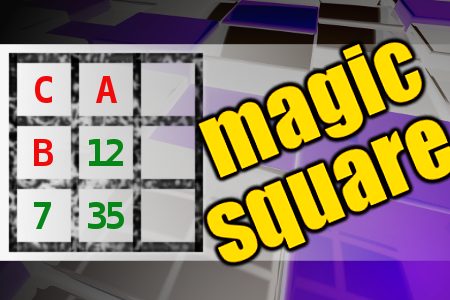MAGIC SQUARE: Calculate A-B+C
The aim is to place the some numbers from the list (7, 12, 17, 19, 24, 25, 29, 30, 35, 58) into the empty squares and squares marked with A, B an C. Sum of each row and column should be equal. All the numbers of the magic square must be different. Find values for A, B, and C. Solution is A-B+C.
Pet Store
A lady was walking down the street to work and she saw a parrot on a perch in front of a pet store. The parrot said to her, “Hey lady, you are really ugly.” Well, the lady is furious! She stormed past the store to her work.
On the way home she saw the same parrot and it said to her, “Hey lady, you are really ugly.” She was incredibly ticked now. The next day the same parrot again said to her, “Hey lady, you are really ugly.”
The lady was so ticked that she went into the store and said that she would sue the store and kill the bird. The store manager replied profusely and promised he would make sure the parrot didn't say it again.
When the lady walked past the store that day after work the parrot called to her, “Hey lady.”
She paused and said, “Yes?”
The bird said, “You know.”

